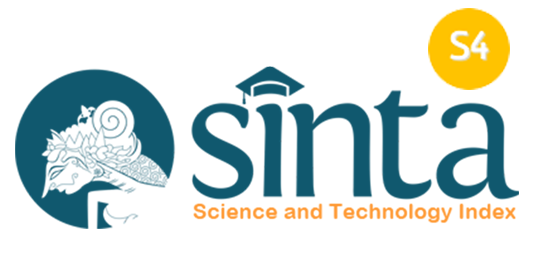The Impact of Educational Attainment and Professional on Women's Income Contribution in Indonesian Human Resource Management
DOI:
https://doi.org/10.23917/benefit.v9i2.6808Keywords:
Women's Income Contribution, Women’s Professional Workers, Women's Education LevelAbstract
This study analyzes the influence of women professional workers and women's education levels on women's income contributions. The data used are secondary data obtained from the Central Statistics Agency (BPS), using data at the provincial level for 2018-2022. The method used in this study is panel data regression. This study found that the variable of women professional workers positively affects women's income contributions. In addition, the results show that the variable of women's education level positively affects the variable of women's income contributions, especially elementary and high school education levels.
Downloads
References
Ananta, A. (1990). Ekonomi sumberdaya manusia. Jakarta: Lembaga Demografi FE UI.
Anderson, D. M., & Shinew, K. J. (2003). Gender Equity in The Context of Organizational Justice: A Closer Look at a Reoccurring Issue in The Field. Journal of Leisure Research, 35(2), 228-247.
Bae, S.-O., & Patterson, L. (2014). Comparison and Implications of Human Capital Theory at the Individual, Organization, and Country Levels. Journal of Organizational Culture, Communications and Conflict, 18(1), 11.
Brixiová, Zuzana & Kangoye, Thierry & Said, Mona,.(2020). Training, Human Capital, and Gender Gaps in Entrepreneurial Performance. Economic Modelling, Elsevier, 85(C), 367-380.
Cerrato, J., & Cifre, E. (2018). Gender Inequality in Household Chores and Work-Family Conflict. Frontiers in Psychology, 9 (1330), 1–11.
Fakih, M. (2013). Analisis Gender dan Transformasi Sosial. Yogyakarta: Pustaka Pelajar.
Ghebremichael, Berhane.(2013). The Role of Cooperatives in Empowering Women. Journal of Business Management & Social Sciences Research, 2(5).
Gujarati, D. N. (2015). Basic Econometrics (5th ed). New York: The McGraw-Hill Companies.
Karimah, A., & Susanti, H. (2022). Gender Inequality in Education and Regional Economic Growth in Indonesia.Jurnal Ekonomi pembangunan, 20(1).
Lee, J., Park, J., and Lee, S. (2015). Raising Team Social Capital with Knowledge and Communication in Information Systems Development Projects. International Journal of Project Management, 33, 797-807.
Lin, X., Li, Y., & Wang, X. (2017). Social Commerce Research: Definition, Research Themes, and The Trends. International Journal of Information Management.
Malau, W. (2015). Pengarusutamaan Gender dalam Program Pembangunan. Jupiis: Jurnal Pendidikan Ilmu-Ilmu Sosial, 6(2), 125.
Marhaeni, D. (2011). Analisis Pengaruh Pengeluaran di Bidang Pendidikan dan Kesehatan dari Pemerintah dan Rumah Tangga, serta Kredit Mikro, Kecil dan Menengah terhadap Indeks Pembangunan Gender di Kabupaten/Kota di Provinsi Jawa Timur.
Mayilyan, F., & Yedigaryan, K. (2022). The Evolution of Human Capital Theory. Alternative Quarterly Academic Journal, January 2022, 68–79.
McKinsey & Company. (2023). 2023 ESG report: Accelerating sustainable and inclusive growth for all. https://www.mckinsey.com/about-us/social-responsibility/esg-report-overview .
Mead, S., Hilton, D., & Curtis, L. (2001). Peer Support - A Theoretical Perspective. Psychiatric Rehabilitation Journal, 25(2), 134–141.
Pandean, V. D., Tarore, M. L. G., & Benu, N. M. (2019). Kontribusi Tenaga Kerja Wanita Terhadap Pendapatan Keluarga (Divisi Bawang Goreng “Garuda Jaya” pada CV. Duta Agro Lestari). AGRIRUD, 1(2), 191-200.
Setyadi, S. (2022). The Impact of Gender Inequality and Economic Variables on Education Inequality: Panel Data Analysis. Gorontalo Development Review, 5(1).
Sulistyowati, T. (2015). Model Pemberdayaan Perempuan dalam Meningkatkan Profesionalitas dan Daya Saing untuk Menghadapi Komersialisasi Dunia Kerja. Jurnal Perempuan dan Anak, 1(1), 1-11.
Todaro, M. P., & Smith, S. C. (2015). Economic Development (12th ed.). England: Pearson.
UN Women. (2023). About UN Women. https://www.unwomen.org/en/about-us/about-un-women.
World Bank. (2013). Increasing Female Labor Force Participation. World Bank.
World Economic Forum. (2023). Global gender gap report 2023. https://www.weforum.org/publications/global-gender-gap-report-2023/
Yadav, P. (2022). Intercorrelation between Digitalization and Women Empowerment.British Journal of Multidisciplinary and Advanced Studies, 3(1), 1-18.
Yuniashri, E., Susilo, S., & Wahyudi, S. T. (2023). Does the Informal Sector Suitable for Female Labor?JEJAK Jurnal Ekonomi dan Kebijakan, 16(1).
Downloads
Submitted
Accepted
Published
Issue
Section
License
Copyright (c) 2025 Benefit: Jurnal Manajemen dan Bisnis

This work is licensed under a Creative Commons Attribution 4.0 International License.










